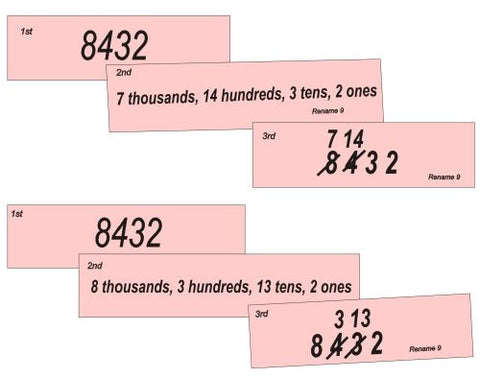Fraction Concepts
- Full-page free-response taskcards on beginning fraction concepts and terminology
- Used with or without concrete fraction materials for addition and subtraction of like fractions.
- For children in grades 3-6
- Reusable cardstock or blackline options (answer sheets included)
- Twenty separate exercises with about eighteen questions each
Cardstock variant is used for individualized work students may access as needed. As with many educational labs, students record their answers on a separate sheet of paper and then return the taskcard for other students to use. Because repeated use is anticipated, lamination or sheet protectors without tabs are recommended for the cardstock pages. Full-page cardstock can be stored in portable literature display (landscape orientation), and third and half-page cardstock can be cut and stored in 9" x 3" plastic organizer. Separate paper answer pages can be stored in a binder or separate file.
Blackline masters are good for whole-group instruction, homework, tutoring sessions, and assessments. Because they are used to reproduce worksheets for multiple students, they include copyright for a given site. (However, copyright does not permit sharing among different sites.) Blacklines may be stored in a file or binder and kept in the copy room for teachers to copy for their class as needed. Teachers usually keep a copy of the answer pages in a separate file or binder in the classroom.
Digital PDFs are the same as shipped blackline masters, but emailed as a downloadable digital PDF file to the purchaser's email address. Since no paper or shipping costs are incurred on our part, digital PDFs can be offered for a lower price. Files are downloaded through an immediate separate email from the reputable download service SendOwl. Digital PDFs are copyrighted and allow only limited access. As is the case for shipped blackline masters, masters printed from digital PDFs may be shared among teachers at a single site.
Scope and Sequence Chart (Click here)
The teacher's experience and the sequence of skills in the students' basic math program are the best guides in determining which skills should be introduced first. In general, the scope and sequence chart above can be used as a guide.
A number of sets for younger children are "color coded." Some teachers present all the levels with an exercise set, while others prefer to present all the blue (two-digit) exercises, progress to the pink (three-digit), and culminate with the green (four-digit).
Other skills such as Roman Numerals require no prerequisites other rhan an understanding of place value. Such exercises can be presented any time.
We Also Recommend

